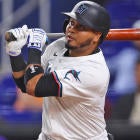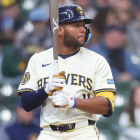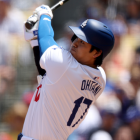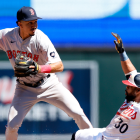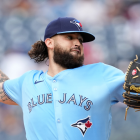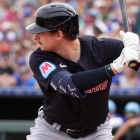It's one of the slowest Hot Stove seasons in decades. Three decades to be precise, when the ugly specter of collusion ripped through the game. Swat away a handful of conspiracy theorists who've argued that collusion is making a comeback, and we get to this:
What the hell is going on right now? Why are so many big-ticket free agents still sitting out there? Why won't anybody sign anybody?
I talked to six high-ranking baseball operations officials who offered plenty of insight. Here's what they had to say.
Teams are getting smarter, stupid
Free agency is often a fool's errand. Players hit the open market in their late 20s and early 30s, typically at or right after peak. That means that any interested parties are bidding for those players' decline phases. Consider that some of the best players still available are also pitchers -- the most volatile commodity in baseball -- and you get an extra layer of healthy skepticism, and thus an aversion to breaking the bank.
"Free agency has slowed for many of the same reasons starting pitchers are no longer pitching deep into games; teams have smartened up and are paying more attention to historical data and less attention to conventional wisdom," one National League executive said. "The track record of free-agent signings has been abysmal for teams. And teams know that the goal isn't to win the offseason. I'm surprised it's taken this long!"
"I think more teams really study the risk and reward of mega-contracts," another NL exec said. "And, they are more disciplined based on their findings."
From Mo Vaughn to B.J. Ryan and Albert Pujols to Jacoby Ellsbury, baseball history is littered with examples of optimistic forecasts that went bust due to age, injuries and skills erosion.
"Clubs appear to be respecting the lessons of history in that spending in free agency is actually inefficient in too many cases," our third NL exec said.
"GMs are acting more like owners rather than managers," one American League exec said. "Trying to maximize long-term value and avoid the big crash that comes from overspending. GMs are smarter, better and more compensated than ever before. The front offices all recognize how bad many of these big, long-term deals are for aging players."
It's one thing for the Tampa Bay Rays and Pittsburgh Pirates to get smarter about how they spend money. But when the industry's richest teams crack the code, you get fewer contracts that make you ask, "What the hell was that?"
"Perhaps the biggest reason is that big teams got smart," one AL exec said. "Dodgers, Yankees, Cubs, Angels. Not sure about Boston yet. It used to be small teams had to be smart to survive, but now big teams are smart so there is no 'dumb money.'"
The Death of the Cowboy
It's not just general managers who are getting smarter and more conservative with their money; owners are too. The skyrocketing of franchise sale prices has accelerated the move toward fiscal restraint, with Bruce Sherman's $1.2 billion buy of the Marlins and the fire sale that followed approximately 10 seconds later just the most overt example.
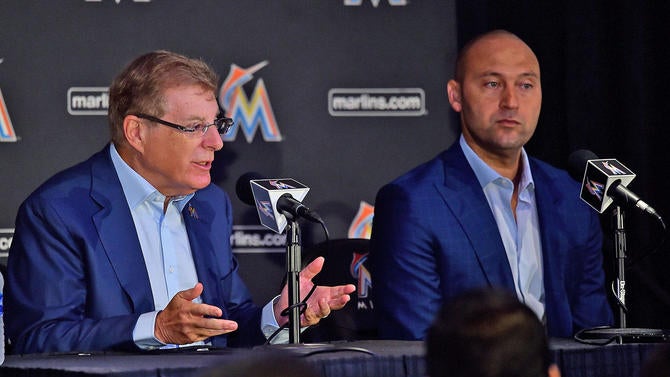
"These teams cost a fortune to acquire," an AL exec said. "$1.2 billion for a bad team with no fans, saddled with debt. Anybody who buys it is going to want to go from the red to at least break-even immediately. The industry has a ton of debt. That has to be paid down at some point. The elder owners who are willing to just pull money from other businesses or finance losses to keep a payroll high are becoming extinct. There are fewer cowboys who want to win at all costs today and let tomorrow sort itself out."
These guys ... aren't that great
Position players who can rake but don't field or run well (J.D. Martinez, Carlos Santana, Jay Bruce). Multi-tool players with recent injury and performance issues (Carlos Gomez). Speed demons with limited bats (Jarrod Dyson). Players who are overrated by traditional metrics/not as loved by advanced stats, and are asking for zillions of dollars (Eric Hosmer). Talented pitchers with health red flags (Alex Cobb, Brett Anderson). Top pitchers who are risky because all pitchers are risky (Yu Darvish, Jake Arrieta).

This year's free-agent class might not have even a single sure thing. The fact that players' skills tend to erode faster today than they did during the height of the PED era adds to the risk.
"The top tier of players is good and can be difference-makers," one AL exec said. "But there are some flaws in health histories, age, recent performance and defensive spectrum issues that could make it tough for those players to create dynamic bidding wars."
One NL exec was far more blunt: "This free-agent class is very mediocre [being very kind]."
Next year's free-agent class is going to be a monster
Bryce Harper. Manny Machado. Josh Donaldson. Clayton Kershaw, if he opts out of the final two years of his $215 million deal. Teams are salivating at the thought of signing elite players of that caliber, with Harper and Machado offering the added bonus of being extraordinarily young to be hitting the open market. As a result, clubs might decide to pass on the B+ free agents right in front of them, in the hopes of landing A++ talent a year from now.
"Clubs are saving their money for the free-agent class next year," an NL exec said.
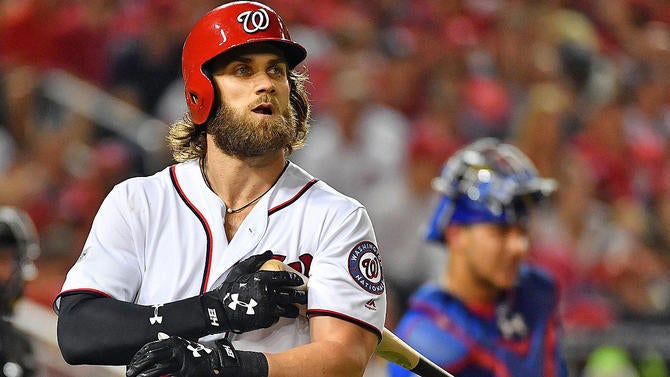
Besides, that exec said, most of the big-market teams are already loaded and don't have huge needs. This winter's available players might not be big enough upgrades over what they have to compel them to spend big now. Baseball's luxury tax also highly incentivizes teams to try to save money in a given year, thus saving tens of millions of dollars and clearing the decks for future big buys.
"The clubs that have gone over the threshold recently seem to be committed to getting under that threshold to reset their tax rate," the NL exec said. "[So that they're] able to spend on the free-agent market next year."
The Ohtani Factor
Ask two different talent evaluators how the Shohei Ohtani sweepstakes might've affected this winter's Hot Stove race, and you might get two completely different opinions.
One AL exec I spoke to said that both the Ohtani chase and the fever pitch of the Giancarlo Stanton sweepstakes prompted numerous teams to put everything else on hold, until they could see if they could land one of those big fishes.
Another AL exec disagreed.
"I don't think Ohtani really held up the market," he said. "There were like five teams that had a legit shot at him, so it shouldn't have really paralyzed the industry."
The cut-throat agent game
For every Scott Boras, there are scores of agents trying to break through with big-money signings for their clients. That struggle can also skew how the free-agent market plays out, said one AL exec.
"Agent competition for players is as fierce as ever," he said. "And in some cases they've made promises to players about what they can get that they're unwilling to fall short of -- unless they have to."
The players who have signed aren't exactly suffering

"While the market has been slow, I don't think players have actually gotten underpaid," an AL exec said. "Everyone who has signed has gotten roughly what we would have predicted or more. Tyler Chatwood well exceeded industry expectations, Jay Bruce was dead on what our guess was, and same with Carlos Santana (although at a higher AAV). The relievers have all gotten more than we would have expected. The issue is clearly not what players are signing for, it's how many of them are signing -- and clearly the pace has been slow."
The waiiiiiiting might no longer be the hardest part
Scott Boras has leveraged winter waiting games and cozy relationships with team owners into billions of dollars for his clients. But with teams getting smarter, plus the luxury-tax calibration and other factors in play, one AL exec predicts that the balance of power in negotiations might finally swing in the other direction.
"Boras' strategy is finally going to blow up on him," he said. "Thank goodness for all of us."
In the end, though, it's possible that nothing at all changes
All the confusion, all the perplexed faces, the theories about teams falling victim to groupthink and thus suppressing salaries due to a lack of risk-taking, even the smattering of collusion accusations linked to this deathly quiet offseason might very well prove to have been premature, and pointless. For one thing, the players who have signed on the dotted line, from Santana's three-year, $60 million deal with the Phillies to the passel of relief pitchers who've nabbed multiyear deals, have landed right around reasonable estimates of their market value.
Once the next big domino does fall, the others might do the same in a hurry. Martinez might be the next Prince Fielder, and the other big names still out there might get all the bucks they ever dreamed of too.
"The truth is that most of these guys will get paid," an NL exec said. "It's just taking longer, and will cost the lower- and middle-class players at the end of the day."
















